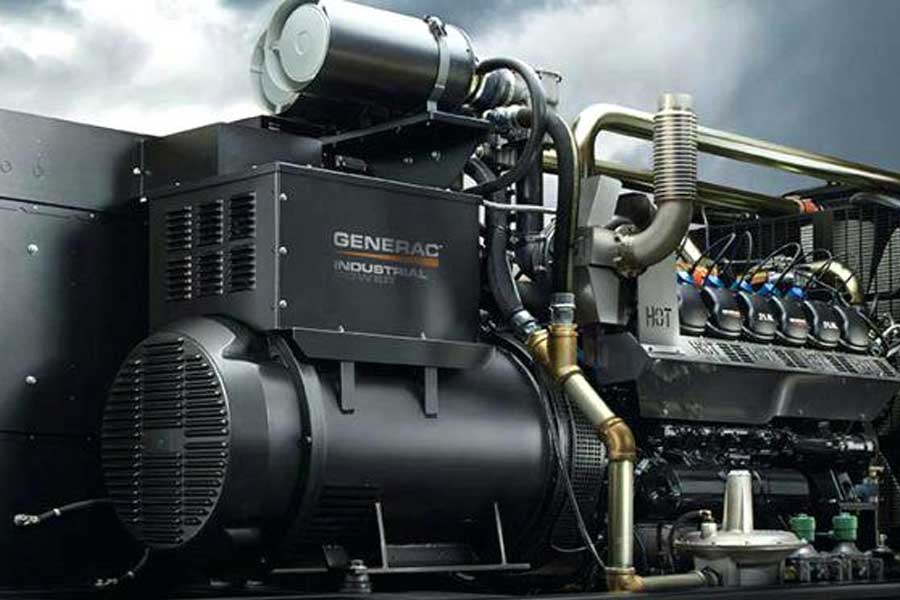Introduction
The oil and gas industry operates in diverse and demanding environments that require reliable and efficient power sources. Generators play a vital role in providing electrical power for drilling rigs, offshore platforms, and remote facilities. They offer a dependable source of energy to support various operations, ranging from drilling and extraction to transportation and refining. This article provides an overview of different types of generators commonly used in the oil and gas industry.
1. Diesel Generators
Diesel generators are widely utilized in the oil and gas industry due to their robustness and fuel efficiency. They operate by burning diesel fuel in an internal combustion engine to produce mechanical energy, which is then converted into electrical power. These generators offer excellent load acceptance and can provide power for extended periods. Diesel generators are often favored for their reliability and durability in harsh environments, making them suitable for both onshore and offshore applications.
2. Natural Gas Generators
Natural gas generators have gained popularity in recent years as the industry focuses on reducing emissions and adopting cleaner energy solutions. These generators use natural gas as fuel, which burns cleaner than diesel or other fossil fuels. They operate similarly to diesel generators but with modifications to accommodate natural gas combustion. Natural gas generators offer improved emissions performance, lower operating costs, and reduced environmental impact, making them an attractive choice for environmentally conscious oil and gas companies.
3. Dual-Fuel Generators
Dual-fuel generators provide flexibility by allowing the use of two different fuel sources, typically diesel and natural gas. This capability enables operators to switch between fuels based on availability, cost, or environmental considerations. Dual-fuel generators offer the advantages of both diesel and natural gas generators, including reliability, fuel efficiency, and reduced emissions. They are often employed in areas with fluctuating fuel supplies or stringent emission regulations.
4. Gas Turbine Generators
Gas turbine generators, also known as combustion turbines, are widely used in large-scale operations within the oil and gas industry. These generators utilize a gas turbine engine to convert the energy of burning fuel (such as natural gas or liquid fuels) into mechanical energy. The mechanical energy then drives a generator to produce electricity. Gas turbine generators offer high power output, fast startup times, and excellent load-following capabilities, making them suitable for peak shaving and emergency power applications.
5. Microturbine Generators
Microturbine generators are compact, lightweight, and versatile power sources that find applications in remote or distributed power systems. They operate on the same principle as gas turbine generators but at smaller scales. Microturbines are typically fueled by natural gas, and they offer benefits such as high reliability, low emissions, and minimal maintenance requirements. These generators can be deployed in areas with limited space or as backup power sources for critical equipment.
6. Hybrid Power Systems
Hybrid power systems combine multiple energy sources and storage technologies to optimize power generation for specific oil and gas operations. These systems often incorporate a combination of generators, renewable energy sources (such as solar or wind), and energy storage solutions (such as batteries). Hybrid power systems offer increased efficiency, reduced fuel consumption, and improved environmental performance. They are particularly valuable in off-grid or remote locations, where a reliable and sustainable power supply is crucial.
Conclusion
Generators are essential for the oil and gas industry, providing reliable power to support various operations in challenging environments. Diesel generators have long been the industry standard, but the growing focus on emissions reduction has led to the adoption of natural gas generators and dual-fuel generators. Gas turbine generators and microturbine generators offer high power output and flexibility, while hybrid power systems combine different energy sources for optimal efficiency. The choice of generator type depends on factors such as fuel availability, emissions requirements, power demand, and project location. By selecting the appropriate generator, oil and gas companies can ensure continuous and efficient operations while minimizing environmental impact.


